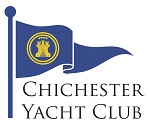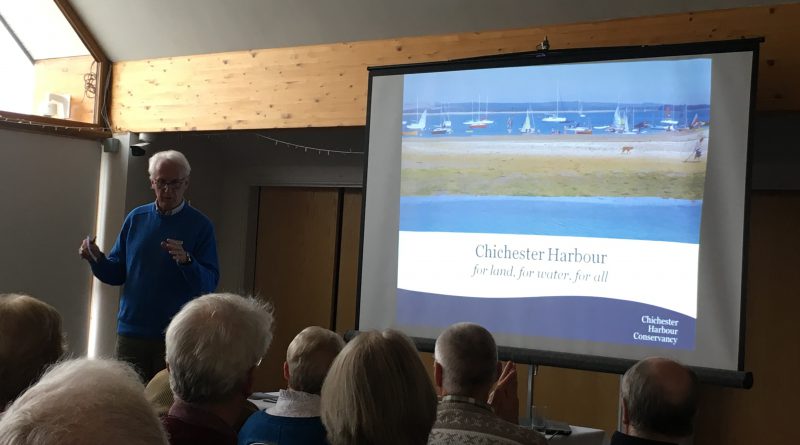Harbour Insights – Philip Walker, Deputy Harbour Master – 8th April 2018
There was a full house for the last of the popular winter lectures. The Deputy Harbour Master gave an entertaining talk on the work of Chichester Harbour Conservancy. In a relaxed style he covered a surprising range of activities undertaken by the Conservancy to maintain safe navigable waters on one side and to conserve an Area of Outstanding Natural Beauty on the other side: a unique combination of duties for one body.
Mr Walker said that there were 12,500 vessels of all shapes and sizes using the Harbour. There were 17 navigable channels, 15 sailing clubs, 7 marinas, 2,000 berths and 3,750 moorings of which the Conservancy owns about half.
The waters are regularly patrolled. Speeding boats are stopped and cautioned and sometimes prosecuted. The AONB is an important wintering habitat for birds that are vulnerable to boat wash. This is especially true for species that lay eggs unprotected on the shore pebbles. The patrol crews are trained not just to enforce byelaws and attend incidents but to anticipate problems. An example would be seeing a small craft heading out of the harbour when a strong onshore wind and ebbing tide are making the bar very hazardous.
Mr Walker explained that there is potential for conflict between different users of the Harbour. The growing colony of seals may be loved by the sailors but not necessarily by the fishermen. Oyster dredging on the few permitted days can be hugely profitable but impossible in a fleet of racing dinghies. Wildfowling is also permitted at certain times under a licencing arrangement. The Conservancy produces leaflets aimed at different types of users that try to help an understanding of other users.
The Conservancy aims to balance the needs of those enjoying the AONB, both on the water and in the surrounding countryside, with conservation of the wild life. It employs 22 full time staff to manage the Harbour plus seasonal staff. There are currently vacancies for the latter. There are numerous statutory obligations to be met including enforcement, education, assistance, partner relationships and security.
The Deputy Harbourmaster peppered his talk with numerous slides of incidents on the water including boats aground at varying alarming angles, boats on apparent collision course and post-collision, boats sunk or low in the water and even a boat on fire. Last year there were 26 vessels requiring a tow, 23 mechanical failures, 23 byelaw infringements, 11 vessels sunk on moorings, 21 vessels adrift of moorings, 29 vessels aground, 27 collisions. Often the loss of power is simply fuel turned off or a kill cord not engaged. Where a tow is necessary the cost is charged to the user.
The Conservancy in its role as Port Authority maintains and rehearses emergency plans e.g. for an oil spill. Its navigation marks are regularly inspected by the lighthouse authority, Trinity House. It maintains 34 lights, 39 day marks and over 200 withies. Regular information is provided in the form of navigation bulletins, notices to mariners, port passage guidance, updates to almanacs and charts, education material and byelaws.
In response to questions from the floor Phil Walker confirmed that anchoring anywhere outside the navigable channels was permitted although common sense was required and proximity to seals should be avoided. He also confirmed that the visitor pontoons at Itchenor (all hours) and Emsworth (day time) were free to use provided vessels had valid harbour plaques.
Philip Brown thanked Phil Walker for a fascinating account of the Conservancy’s work. He also thanked Helen Jupp for organising the excellent series of winter lectures and talks.
– by Keith Martin, photo John Lake

